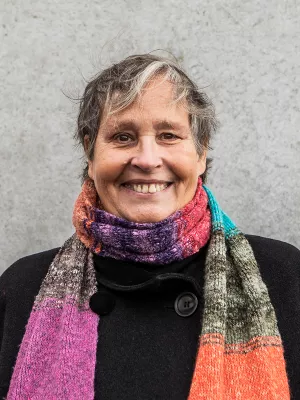
Diana Mulinari
Senior Professor

Population heterogeneity in associations between hormonal contraception and antidepressant use in Sweden : a prospective cohort study applying intersectional multilevel analysis of individual heterogeneity and discriminatory accuracy (MAIHDA)
Författare
Summary, in English
OBJECTIVES: From a reproductive justice framework, we aimed to investigate how a possible association between hormonal contraceptive (HC) and antidepressants use (as a proxy for depression) is distributed across intersectional strata in the population. We aimed to visualise how intersecting power dynamics may operate in combination with HC use to increase or decrease subsequent use of antidepressants. Our main hypothesis was that the previously observed association between HC and antidepressants use would vary between strata, being more pronounced in more oppressed intersectional contexts. For this purpose, we applied an intersectional multilevel analysis of individual heterogeneity and discriminatory accuracy approach.
DESIGN: Observational prospective cohort study using record linkage of national Swedish registers.
SETTING: The population of Sweden.
PARTICIPANTS: All 915 954 women aged 12-30 residing in Sweden 2010, without a recent pregnancy and alive during the individual 1-year follow-up.
PRIMARY OUTCOME MEASURE: Use of any antidepressant, meaning being dispensed at least one antidepressant (ATC: N06A) during follow-up.
RESULTS: Previously mentally healthy HC users had an OR of 1.79 for use of antidepressants compared with non-users, whereas this number was 1.28 for women with previous mental health issues. The highest antidepressant use were uniformly found in strata with previous mental health issues, with highest usage in women aged 24-30 with no immigrant background, low income and HC use (51.4%). The largest difference in antidepressant use between HC users and non-users was found in teenagers, and in adult women of immigrant background with low income. Of the total individual variance in the latent propensity of using antidepressant 9.01% (healthy) and 8.16% (with previous mental health issues) was found at the intersectional stratum level.
CONCLUSIONS: Our study suggests teenagers and women with immigrant background and low income could be more sensitive to mood effects of HC, a heterogeneity important to consider moving forward.
Avdelning/ar
- Socialepidemiologi
- Genusvetenskap
- EpiHealth: Epidemiology for Health
Publiceringsår
2021
Språk
Engelska
Sidor
1-11
Publikation/Tidskrift/Serie
BMJ Open
Volym
11
Dokumenttyp
Artikel i tidskrift
Förlag
BMJ Publishing Group
Ämne
- Health Sciences
Aktiv
Published
Projekt
- Hormonal contraceptives and psychological health in Swedish women – investigating heterogeneity with quantitative and qualitative methods
Forskningsgrupp
- Social Epidemiology
ISBN/ISSN/Övrigt
- ISSN: 2044-6055

